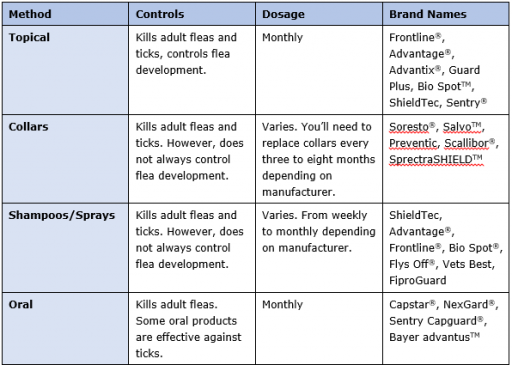Avoiding and Treating Flea and Tick Infestations
June 2, 2017Fleas and ticks are a nuisance for sure, especially if you have pets and livestock. But those invaders are more than inconvenient, they can also carry diseases and viruses that can affect you and your animals. To help you eliminate those pests, we’ve listed out today’s best control options as well as some tips to keep fleas and ticks from taking over your homestead.
Before we dive into preventions and precautions, let’s get to know the enemy.
Fleas are wingless insects. They can live for more than 100 days, preying on dogs, cats, opossums, raccoons, and more. They prefer warmer temperatures and can lay upwards of 40 eggs per day for several weeks. Diseases carried: tapeworm, bartonollosis (Carrion’s disease, cat scratch disease).
Ticks are arachnids. These eight-legged pests attack birds, rodents, foxes, deer, rabbits, raccoons, cattle, dogs, cats, and humans. A tick can live for up to three years and can lay thousands of eggs at a time, but will die immediately afterward. They are hardy, easily living in near-freezing temperatures when necessary. Diseases carried: Lyme disease, Rocky Mountain spotted fever.
At Oakland Vet Hospital in Oregon’s Umpqua Valley, Gene Koo Kang, DVM takes fleas and ticks seriously.
“Fleas are easy to miss unless you look carefully,” said Dr. Kang. “If you have a small, undetected flea infestation now, you will have a large, uncontrolled flea infestation in about three months.”
Veterinarians throughout the Northwest urge pet owners to treat for the fleas and ticks they see, as well as the ones they don’t. The options to treat fleas and ticks are varied. Knowing which one is right for you and your pets is a conversation you should have with your vet. The list below can give you an idea of what is available.

Why Options Stop Working
People throughout the Northwest have reported that some topical flea and tick treatments no longer work well as they once did. While it is possible for fleas and ticks to develop resistance to insecticides, experts recommend re-reading the manufacturer dosage instructions. If label directions are not followed exactly, it can minimize the effectiveness of the treatment.
Another issue is that pet owners begin treating for fleas and ticks after their pet, home, and yard are infested. To really defeat fleas and ticks, start treating for them before you see them.
Reducing Outside Habitat
The first place to start is with outdoor dog and cat houses. Keep your pet’s home away from vegetation such as tall grasses as well as leaves. If you can, keep their home out of the shade as well. Also, rake away organic debris from your yard, including pet hair and leaves.
There are FDA approved lawn and garden insecticides that can be added to your yard. Follow manufacturer directions for safe application.
Evicting Pests from Your Home
Once they get into your carpet, fleas can be tough to evict. Dr. Kang recommends an insecticide to kill the eggs. Apply once to kill off the adults and most of the eggs. Then reapply to kill the fleas that hatched after you sprayed the first time. If they lay eggs you’ll have to start all over again.
Coastal Has Your Cure for Fleas and Ticks
You’ll find everything you need to remove fleas and ticks from your world at your nearby Coastal Farm & Ranch. We carry shampoos, collars, topicals, oral medications and more. While you’re there, check out our full line of pet beds, dog houses, food, and toys for your dog and cat.
Coastal Added Advice
- It takes more than one dose of flea and tick prevention to fix the problem.
- If one of your pets is infested it’s important to treat all of your animals.
- It may be necessary to treat your house and yard to completely control ticks and fleas.
- If you bathe your pet too often it can impact treatment effectiveness.
- Flea treatments work best as a prevention.
